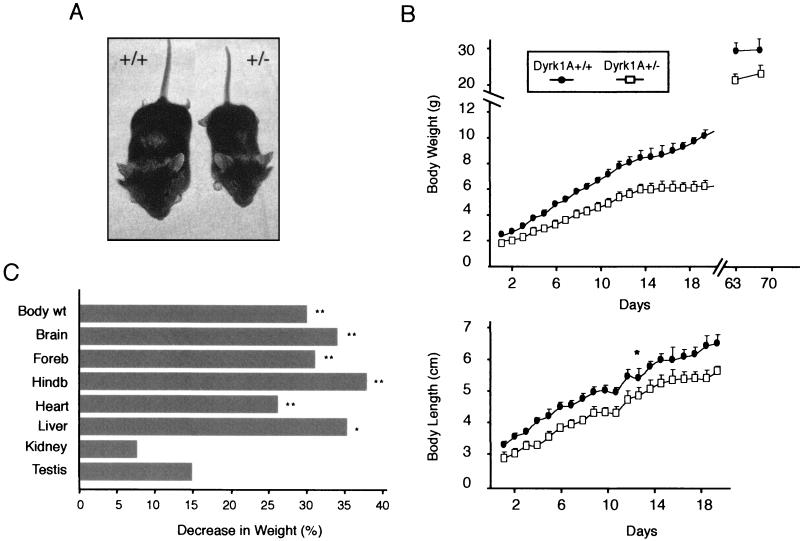FIG. 3.
Growth retardation and body size reduction of Dyrk1A+/− mice. (A) Comparison between a 1-month-old male wild-type mouse (+/+) and a heterozygous (+/−) littermate indicates the significant body reduction of the Dyrk1A+/− mouse. (B) Somatometric curves of preweaning mice. (Top) Weight gain retardation of Dyrk1A+/− mice early in life. Dyrk1A+/− mice remained underweight throughout life in comparison to their wild-type siblings. (Bottom) Growth retardation during early life in Dyrk1A+/− mice. Each data point represents a mean ± standard deviation. Data points for adult weights represent means of male weights. *, P < 0.001 by repeated-measures ANOVA; for all other data points, P < 0.0001 by repeated-measures ANOVA. (C) Percent decreases in body and organ weights in 3-month-old male Dyrk1A+/− mice relative to those of age-matched Dyrk1A+/+ littermates. Asterisks indicate significant decreases in the body or net organ weight of Dyrk1A+/− mice (n = 4 mice per group; *, P < 0.05 by Student's t test; **, P < 0.005 by Student's t test). Abbreviations: wt, weight; Foreb, forebrain; Hindb, hindbrain and posterior part of mesencephalon.

